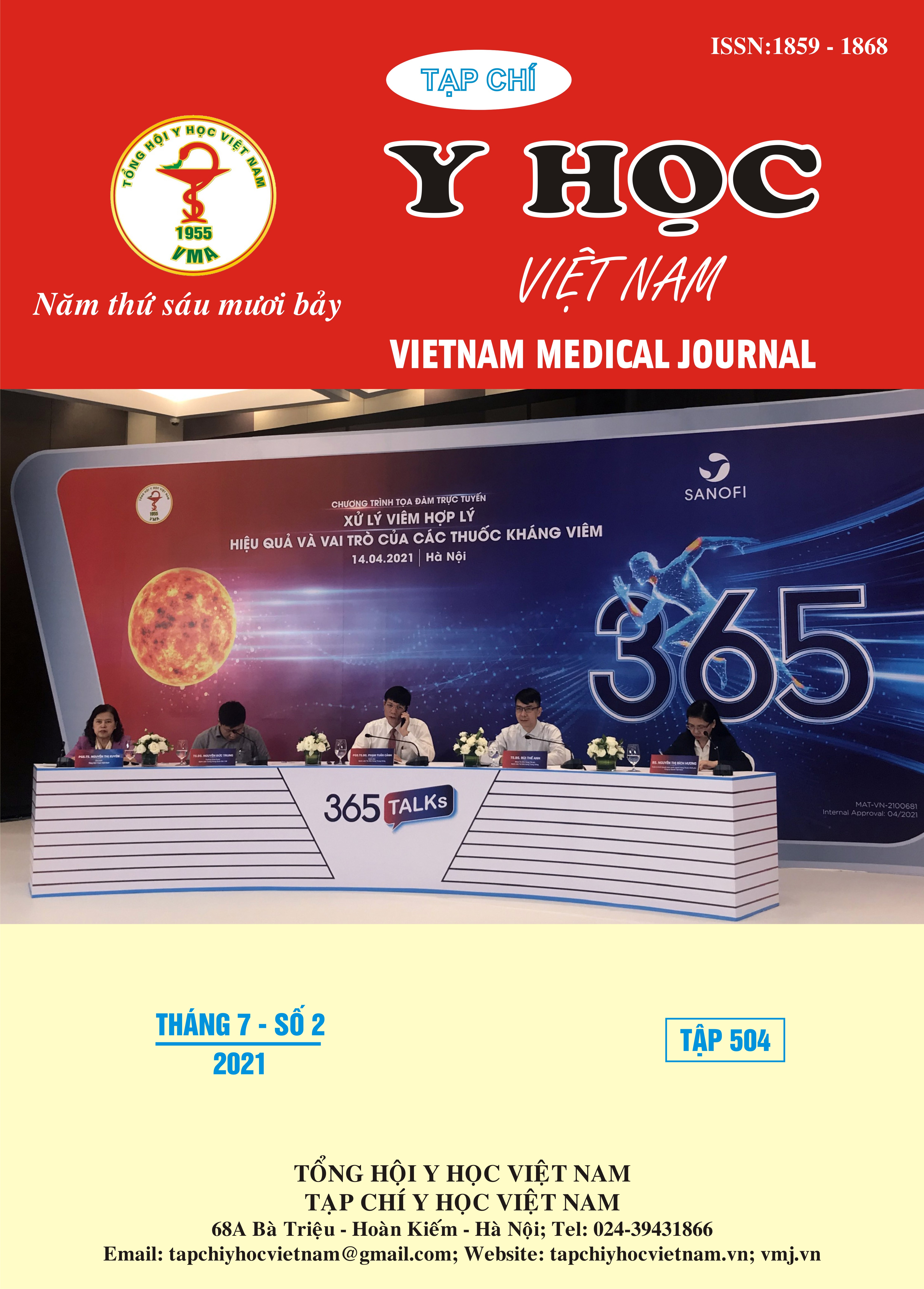ĐÁNH GIÁ TÌNH TRẠNG DINH DƯỠNG THEO THANG ĐO CỦA TRUNG TÂM DINH DƯỠNG TP.HCM ĐỐI VỚI THAI PHỤ ĐẾN SINH TẠI BỆNH VIỆN ĐA KHOA KHU VỰC PHÍA NAM BÌNH THUẬN
Nội dung chính của bài viết
Tóm tắt
Đặt vấn đề: Chế độ dinh dưỡng đầy đủ và đúng cách trong quá trình mang thai có vai trò quan trọng trong sự phát triển và tăng trưởng của thai nhi. Nghiên cứu tiến hành nhằm xác định tỷ lệ dinh dưỡng kém bằng thang đo dinh dưỡng của Trung tâm dinh dưỡng TPHCM. Phương pháp nghiên cứu: Thiết kế nghiên cứu mô tả cắt ngang từ 01/11/2020 đến 31//05/2021. Sử dụng bảng thang đo dinh dưỡng cúa Trung tâm dinh dưỡng TPHCM trên 330 thai phụ đến sinh tại bệnh viện đa khoa khu vực Phía Nam Bình Thuận, với điểm cắt bằng 2,0 điểm để xác định thai phụ có nguy cơ dinh dưỡng. Kết quả: Thai phụ có nguy cơ dinh dưỡng chiếm 17,0% (KTC 95% 13,3-21,8). Kết cục xấu của mẹ: 2,1% (KTC 95%: 0,6 – 3,9) bao gồm: tiền sản giật/sản giật (1,5%), Băng huyết (0,6%), nhau bong non (0,6%), nhiễm trùng sau sinh (0,3%). Kết cục xấu của con: 2,4% (KTC95%: 0,9 – 4,2) bao gồm: can thiệp nhi (0,6%), chuyển dưỡng nhi (2,1%), vàng da sau sinh (0,9%), chuyển tuyến điều trị (0,9%). Các thai phụ là người dân tộc thiểu số có nguy cơ gặp bất thường về dinh dưỡng trong thai kỳ cao gấp 4,8 lần (OR=4,8; KTC 95%: 1,01-22,5) so với thai phụ là người Kinh. BMI <18,5 trước khi sinh con làm tăng nguy cơ gặp bất thường về dinh dưỡng gấp 64,1 lần (OR=64,1; KTC 95%: 11,2-368,3). Có mối liên quan giữa kết cục thai kỳ xấu và bất thường dinh dưỡng trong thai kỳ (p<0,05). Kết luận: Sử dụng thang đo dinh dưỡng của Trung tâm dinh dưỡng TPHCM với điểm cắt 2,0 điểm giúp sàng lọc đối tượng thai phụ có nguy cơ rối loạn dinh dưỡng trong thai kỳ, và tiên đoán các ảnh hưởng đến sức khoẻ cho thai phụ và bé sơ sinh.
Chi tiết bài viết
Từ khóa
thang đo dinh dưỡng, dinh dưỡng trong thai kỳ, kết cục thai kỳ
Tài liệu tham khảo
2. Lanzone A Triunfo S (2015), "Impact of maternal under nutrition on obstetric outcomes", J Endocrinol Invest. 38(1), pp 31 - 8.
3. Lê Thị Thanh Hoa, Lê Thị Hương Nguyễn Thị Thanh Tâm (2014), "Tình trạng dinh dưỡng và một số yếu tố liên quan của phụ nữ mang thai huyện Duy Tiên, tỉnh Hà Nam năm 2014", Tạp chí DD&TP/Journal of Food and Nutrition Sciences.
4. Bộ Y tế (2015), Hướng dẫn chẩn đoán và điều trị các bệnh sản phụ khoa - Ban hành kèm theo Quyết định số 315/QĐ-BYT ngày 29/01/2015, Hà Nội, Cục Quản lý Khám chữa bệnh.
5. Trung tâm dinh dưỡng TPHCM (2019), Mẫu 02 - TTDD Phiếu dánh giá tình trạng dinh dưỡng do Trung tâm Dinh dưỡng TPHCM xây dựng dưới sự hỗ trợ của UNICEF tại Việt Nam, TPHCM, Trung tâm Dinh dưỡng TPHCM.
6. Văn Quang Tân và Lê Thị Hợp (2012), "Thực trạng dinh dưỡng của bà mẹ và chiều dài cân nặng của trẻ sơ sinh tại tỉnh Bình Dương năm 2012", Tạp chí DD&TP/Journal of Food and Nutrition Sciences.
7. C. Negash (2015),"Association between Maternal and Child Nutritional Status in Hula, Rural Southern Ethiopia: A Cross Sectional Study", PLoS One. 10(11), e0142301.
8. K. G. Mishra, V. Bhatia R. Nayak (2020), "Maternal Nutrition and Inadequate Gestational Weight Gain in Relation to Birth Weight: Results from a Prospective Cohort Study in India", Clin Nutr Res. 9(3), 213-222.


